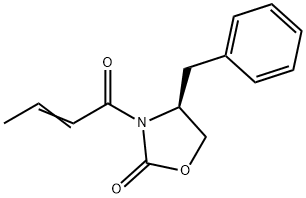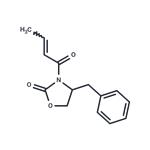Description
Locostatin (133812-16-5) inhibits cell migration by disrupting the interaction between Raf kinase inhibitor protein (RKIP) and Raf-1 kinase.1 Locostatin covalently binds to His86 of RKIP and also disrupts its interaction with G protein-coupled receptor kinase 2.2 Effectively inhibits cytokine release by human lymphocytes.3? Alleviates CCl4-induced liver fibrosis in a mouse model.4 A useful probe to explore the complex functions of RKIP in cell physiology.5
References
Zhu et al. (2005), A chemical inhibitor reveals the role of Raf kinase inhibitor protein in cell migration; Chem. Biol., 12 981
Beshir et al. (2011), Locostatin Disrupts Association of Raf Kinase Inhibitor Protein With Binding Proteins by Modifying a Conserved Histidine Residue in the Ligand-Binding Pocket; For. Immunopathol. Dis. Therap. 2 47
Menoret et al. (2009), The oxazolidinone derivative locostatin induces cytokine appeasement; J. Immunol. 183 7489
Ma et al. (2019), Locostatin Alleviates Liver Fibrosis Induced by Carbon Tetrachloride in Mice; Dig. Dis. Sci. 64 2570
Mc Henry et al. (2008), Raf kinase inhibitor protein positively regulates cell-cell adhesion; J. Cell Biochem. 103 972



